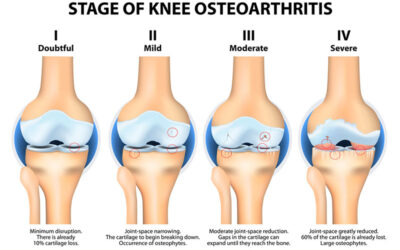Skin cancer, the most common form of cancer in the U.S., affects millions of individuals each year. Despite ongoing public health campaigns warning of the dangers of excessive sun exposure, research continues to highlight alarming gaps in risk perception among U.S. adults, especially when it comes to preventing sunburns—a significant risk factor for skin cancer.
In this article, we’ll explore the findings from recent studies on skin cancer risk perceptions and sunburn rates in the U.S. adult population, shedding light on how behavior, awareness, and misconceptions contribute to skin cancer risk.

Skin Cancer: A Growing Public Health Concern
Skin cancer can take several forms, with the most dangerous being melanoma, which can spread rapidly if not detected early. Other common types, like basal cell carcinoma and squamous cell carcinoma, though less deadly, are still concerning due to their prevalence and potential for significant skin damage.
According to the American Academy of Dermatology, around 9,500 people in the U.S. are diagnosed with skin cancer every day, making prevention a top priority. Despite the known link between ultraviolet (UV) exposure and skin cancer, many Americans continue to underestimate their personal risk, leading to inadequate sun protection practices and higher rates of sunburns.
Sunburns: A Key Indicator of Risk
Sunburns are an immediate and visible consequence of UV exposure and serve as a strong indicator of skin cancer risk. Research has shown that just five or more blistering sunburns between the ages of 15 and 20 can increase the risk of developing melanoma by 80%. While many people associate sunburn with short-term discomfort, the long-term health risks can be life-threatening.
Despite these risks, a 2022 study conducted by the Centers for Disease Control and Prevention (CDC) found that nearly 34% of U.S. adults reported at least one sunburn in the previous year. This statistic underscores the need for better public education and preventive measures, especially in regions with high UV exposure.
Perception of Skin Cancer Risk Among U.S. Adults
A significant factor contributing to the high rates of sunburns is the discrepancy between perceived and actual skin cancer risk. Many adults believe they are not at risk because they have darker skin, use sunscreen occasionally, or spend only limited time outdoors. However, these assumptions can lead to a false sense of security.
A study published in the journal JAMA Dermatology revealed that while most U.S. adults are aware that sun exposure can cause skin cancer, a large percentage of them underestimate their personal risk. This is particularly true among individuals with medium to darker skin tones, who may not experience visible sunburns as frequently but are still susceptible to skin damage and skin cancer over time.
Barriers to Sun Protection
There are several barriers preventing adults from taking adequate sun protection measures. For some, the inconvenience of applying sunscreen regularly or the perception that protective clothing is uncomfortable in hot weather leads to inconsistent sun protection. Others may believe that spending time in the shade or using umbrellas provides enough protection, which can be misleading, as UV rays can still penetrate through clouds and reflect off surfaces like sand and water.
Additionally, misconceptions about tanning persist. Many individuals believe that a tan provides some level of protection against sunburn. While a tan may offer minimal protection, the reality is that any change in skin color caused by UV exposure indicates skin damage.
Demographic Factors: Who Is Most at Risk?
Research shows that certain demographic factors play a role in the likelihood of sunburns and skin cancer risk perceptions. For example, younger adults, particularly those in their 20s and 30s, report higher rates of sunburns compared to older adults. This could be due to lifestyle factors, such as spending more time outdoors or engaging in outdoor recreational activities.
Additionally, gender differences exist. Men are more likely to report sunburns than women, potentially due to lower sunscreen use and greater time spent outdoors without protective measures. Moreover, individuals with lighter skin tones report more frequent sunburns, as their skin lacks the melanin necessary to absorb UV radiation effectively.
Steps for Prevention
Raising awareness about the risks of sun exposure and the importance of regular sun protection is crucial in reducing skin cancer rates. Health professionals recommend a few key strategies for preventing sunburns and lowering skin cancer risk:
- Use Broad-Spectrum Sunscreen: Apply sunscreen with an SPF of 30 or higher, and make sure it protects against both UVA and UVB rays. Reapply every two hours or more frequently if swimming or sweating.
- Wear Protective Clothing: Long-sleeved shirts, wide-brimmed hats, and sunglasses with UV protection can help minimize sun exposure.
- Seek Shade: Avoid direct sunlight during peak UV hours, typically between 10 a.m. and 4 p.m.
- Avoid Tanning Beds: Tanning beds expose users to concentrated UV radiation, significantly increasing the risk of skin cancer.
- Get Regular Skin Checks: Early detection of skin cancer is key to successful treatment. Regularly check your skin for new or changing moles and consult a dermatologist for professional skin exams.
Conclusion
While skin cancer is a serious public health issue, it is largely preventable with the right precautions. By addressing the gap between skin cancer risk perceptions and actual sunburn rates, we can encourage better sun protection practices among U.S. adults. Increased education, awareness, and personal responsibility in sun safety can go a long way in reducing the prevalence of skin cancer and protecting public health.


